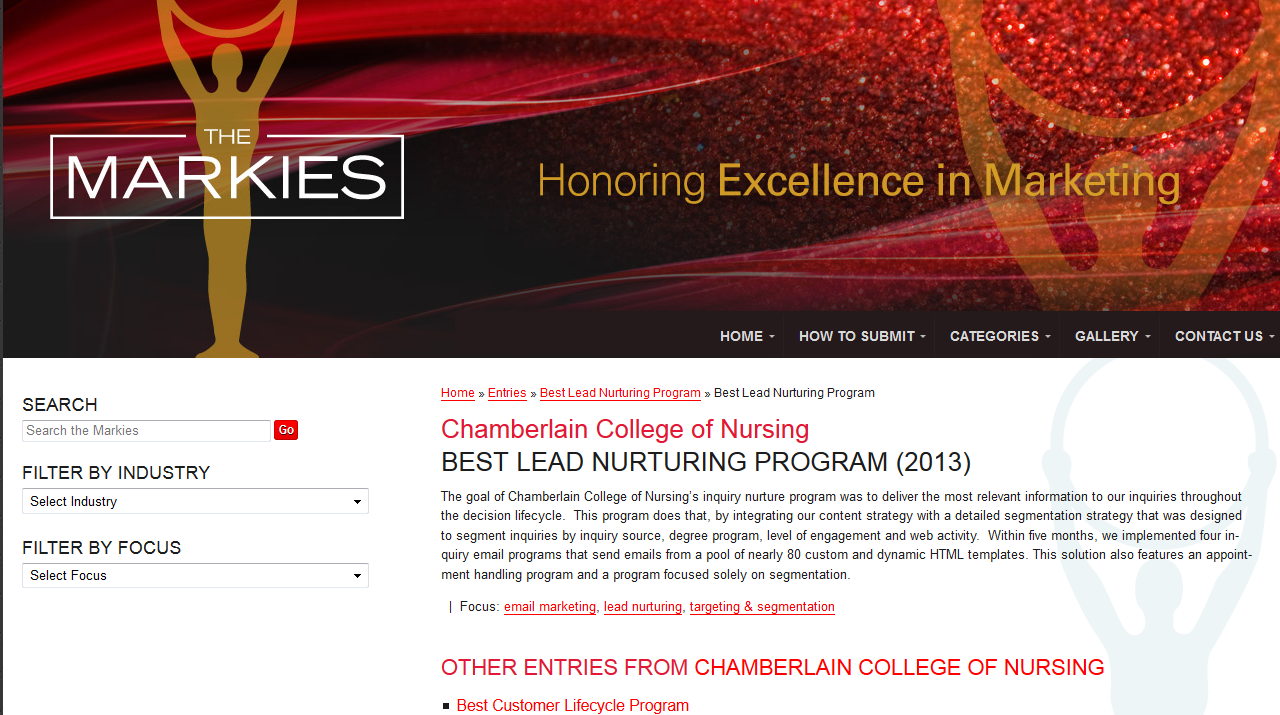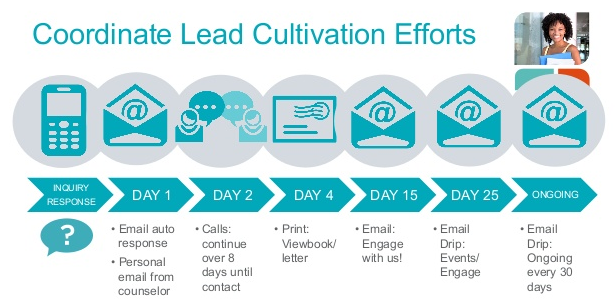Prospective students pondering their post-secondary options have a very difficult decision to make. Initial impressions are critical and can make all the difference when choosing between a short list of schools with similar offerings. With an increasingly competitive higher education market comes greater expectations among prospects for quick responses to their inquiries that treat them as valuable and unique. The initiation of contact with a university is the beginning of an opportunity that can be nurtured or squandered. Failure to adequately reply essentially ends an inquiry before it begins.
While most schools have worked hard to develop sophisticated multi-channel marketing campaigns for lead generation, it takes a corresponding lead nurturing strategy to convert those efforts into increased enrollment numbers. Advances in website optimization and social media marketing have exponentially expanded the ability to reach more students, but it is important to recognize that not all leads are created equal. Defining what constitutes a “high quality” lead is explored further in a previous student recruitment blog, but a prospect’s true interest in your school can often be predicted by how they first interacted with you.
1. Define Lead Quality
Efficient recruitment processes consider the costs related to acquiring each student – the number of qualified leads per total expenditure for each marketing channel. Informed prospects who are actively requesting a follow-up from your institution generally warrant a more focused, close-contact response than a list of names purchased from an outside source. Segmenting leads according to their stage of the admissions process is an effective method of reducing conversion time and allows easier tracking of various contact methods.
Example: Chamberlain College of Nursing (awarded with 2013’s “Best Lead Nurturing Program” in The Markies, which honours excellence in marketing) developed a detailed segmentation strategy to deliver the most relevant information to inquiries throughout the decision lifecycle. After segmenting according to inquiry source, degree program, level of engagement and web activity, they implemented four inquiry email programs using a pool of nearly 80 custom and dynamic HTML templates, with an additional appointment handling program and a program focused solely on segmentation.
2. Quick Replies with Auto-Response
When a student inquires about your college, how do you respond? Last summer, Intead conducted a “mystery shopper” experiment whereby an employee posed as a prospective undergraduate from China and requested admissions information from 30 institutions in the U.S., Canada and Australia to gauge the response rate and data provided. While over half the schools replied within 24 hours, 7 schools surprisingly never responded. It is understandable that admissions offices can get overwhelmed by requests but without a functional inquiry response system, institutions risk losing not only the inquiring student but also peers influenced by word of mouth.
Email is the least expensive and easiest form of communication with prospects, and the most efficient responses use tools to automate the process, customizing replies based on segmentation variables. Timeliness should be a top priority in nurturing leads. Auto-response systems that thank the prospect for writing effectively streamline the process until followed up soon after with a personalized email, using the student’s native language and connecting with social channels whenever possible. When a new inquiry is added to the database, an automatic email should welcome the prospective student by name and provide helpful links to encourage further research about the school and its programs. Useful links include an online application (for future reference), an updated FAQ section of the school’s website, financial aid and admission details, and relevant blogs and social media forums.
Example: The University of Cincinnati had the most impressive response in the aforementioned mystery shopper test, replying within 24 hours with a nicely written email, a PDF written in Chinese, a QQ friend request (a common email service provider in China), and an invitation to join the school’s prospective student group on QQ, where current international seniors facilitate discussions. The university uses a student information system with software from Swiftpage to segment collected information and coordinate a response campaign. An inquiry’s expressed interest in the nursing graduate program yields this customized instant response, with a brief overview of the program, informative website links and details about information to be received in the coming weeks.
3. Drip Marketing Campaign
Drip marketing is a communication strategy to send a series of messages over time, sequenced to guide leads gradually down the enrollment funnel. This identifies the truly interested prospects to focus lead generation efforts, building engagement to a logical conclusion by dripping manageable chunks of content and methods of contact at specified intervals. Drip activity generally starts with a higher frequency and then slows down to once a month until the lead has officially been ruled out.
Identify the type of communication needed for your prospects and the optimal medium of contact by testing various combinations of outreach, considering the return on investment and probability of conversion. Always help prospects understand the next steps in the process by featuring a prominent call to action, with phone numbers and emails available to answer questions. Follow proper delivery and legal practices to ensure your communications bypass SPAM filtering systems. Scheduling which emails, print mail, phone calls and other methods (online open houses, webinars, etc.) are to be integrated into your follow-up campaign is a continuously evolving process made easier with a customer relationship management (CRM) system. “Smart” online application systems can notify counselors when a partially completed application has been abandoned to follow up with prospects. Staying in touch with the ones who got away through e-newsletters or other sporadic communications increases the odds of their enrollment further down the road.
Here is a sample lead cultivation schedule from Hobsons:
Relationship-building communications throughout the entire admissions process ensures prospective students remain engaged and are ultimately more likely to apply and enroll. Analyzing the characteristics of those who do convert will help focus the efforts and budget of your student recruitment program.
How does your school nurture your leads?








